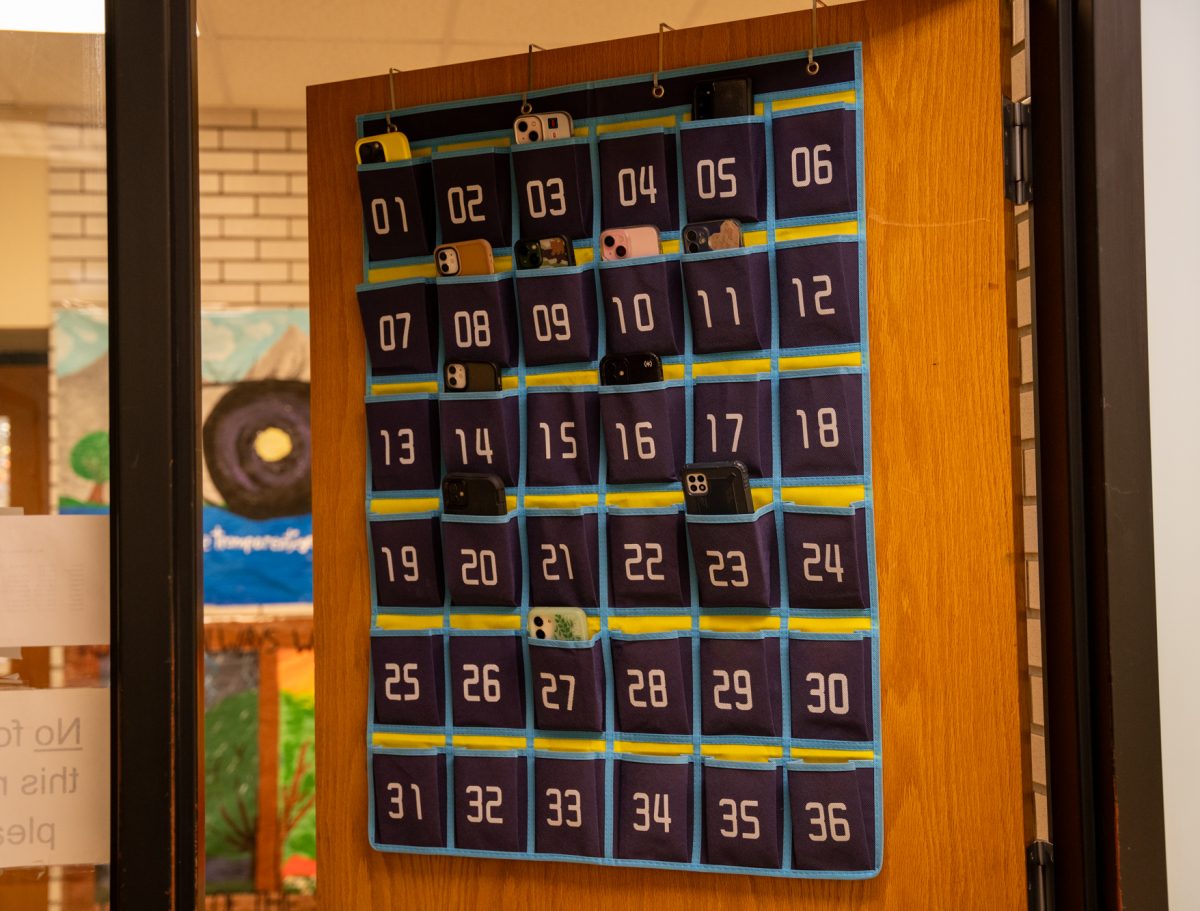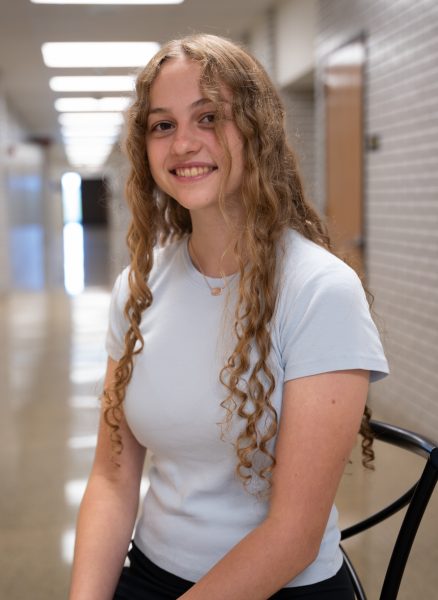In the dawn of the smartphone era, the device seemed to be the ultimate tool for education: any answer to any question at all, anywhere, all the time.
Time, however, has proven to some that cell phones have become anything but that. As more questions are raised about where phones belong in the classroom, schools across the nation are imposing increasingly firm policies and restrictions.
North Allegheny is no exception.
In the 2024-2025 school year, North Allegheny Intermediate High School has seen a shift in phone regulation. Phones are collected and safely stored in classroom cubbies or pockets at the beginning of each class period, and the NAI staff has increased monitoring to ensure that phones are not brought into school restrooms. At the district’s three middle schools, phones are not to be brought into classrooms at all. Instead, students are instructed to leave their phones in their lockers.
These new procedures are part of a larger trend of phone bans across the United States.
“Even knowing you can look at your phone is a distraction,” NASH AP English teacher Darrah Rhinehart said.
In July of 2024, the Pennsylvania Senate passed a bill that encouraged the banning of cell phones in PA public school districts, primarily through the use of lock-boxes that store student phones securely throughout the school day.
Here at NA, the approach has been more nuanced. Although NAI and the middle schools has imposed restrictions, no updates to cell phone policy have been occurred at NASH. For many NASH teachers, it is only logical that the difference between policies and their enforcement across the district’s campuses is largely reliant on age.
“I do see the value in phone bans, but it does depend on the age group,” Rhinehart explained. “It’s within a school’s right to ban them, but it would be a little bit over the top [here at NASH].”
In addition to teachers, NASH administrators see age as the deciding factor regarding phone policies.
“We look at our students’ age group and where responsibility is emphasized,” NASH Principal Matthew Buchak stated.
Buchak also discussed the importance of the phone policies detailed in the Student/Parent Handbook, which states that “appropriate use of electronic devices shall be for educational purposes only.”
Classroom environment can also dictate class phone policies.
“I like that we don’t have a blanket rule and that each teacher gets to make their own system,” NASH math teacher Nick Hannan said.
In Hannan’s classroom, phones are placed in a numbered slot and counted at the beginning of each class period.
“Ever since I started doing this, I noticed a tremendous difference in distraction,” he explained. “Even if I was the only person in the building doing it, I want to do what would be best for me and my students.”
Aside from the issue of distraction, concerns about academic integrity have also led to the nationwide shift towards stricter policies. The sharing of test answers and questions through social media has grown as personal devices have entered classrooms.
In response to the increased potential for cheating, some teachers, such as Rhinehart, collect phones on any days when an assessment is conducted. Other teachers monitor closely to ensure that no personal devices are used on testing days.
“A part of the continuous learning goal of our district is that we can look at active monitoring during assessments, and [find the] best practices to ensure that academic integrity is held up through our staff,” Buchak said.

Despite the national trend toward stronger cell phone restrictions, the devices can play a vital role during the school day. Hannan pointed to the need for some ESL students to rely on their phones for the purpose of language translation. Additionally, parents may want to be able to reach their students quickly and directly in the case of emergencies. Phones are also used for the purpose of attendance and club sign-ups through QR codes and can be helpful educational tools through review games such as Gimkit, Kahoot, or Blooket.
“We encourage the proper use of all electronic devices as outlined in board policy 237. We understand these devices can bring good,” Buchak stated. “We also recognize the harm that can be done with these devices, and so we encourage all to use them in the appropriate way.”
Buchak encouraged students to reach out if they had any questions about NA phone policies.
“We will continue to support our students as guided through NASD’s Code of Conduct. We welcome their voice in creating a safe and welcoming environment.”



